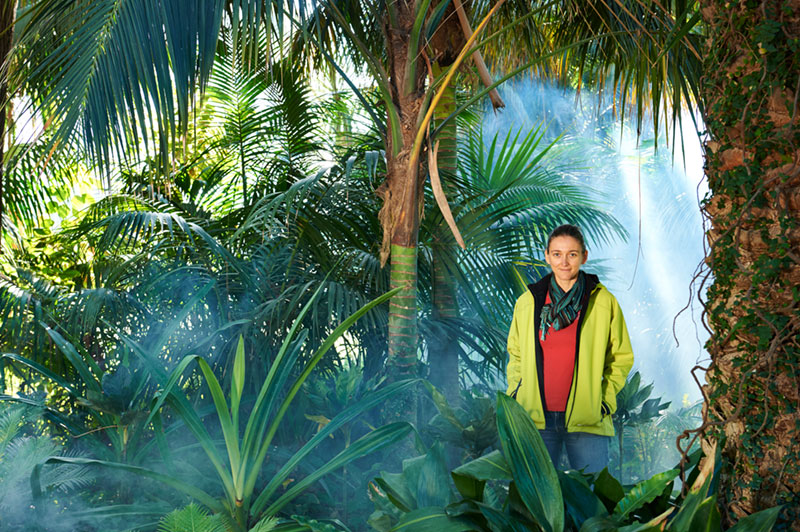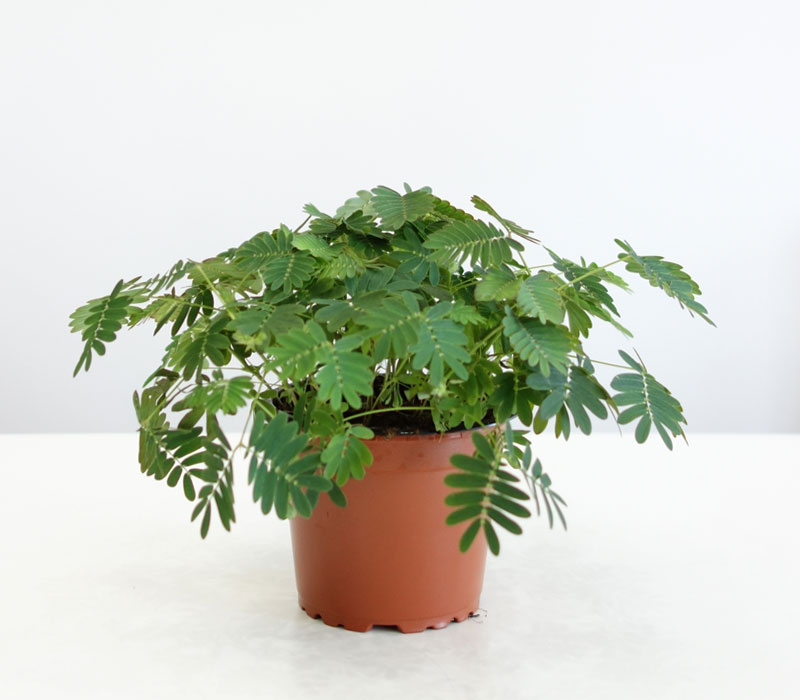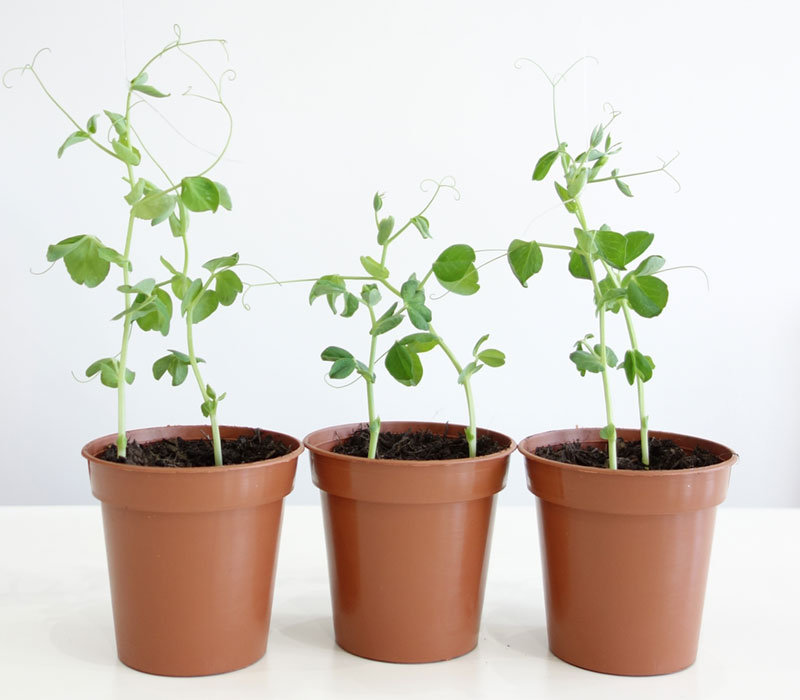In 2009, Monica Gagliano had what she now calls a “fish crisis”.
After 10 years working as a marine ecologist, focusing on relationships between organisms and their physical and social environments, she came to an uneasy realisation about the inevitable death of it all.
“I realised that in science, [when you’re working] with animals, in virtually all instances, it involves the killing of the animal at the end,” she says. “And I thought, ‘I can’t do this, I just can’t do it anymore’.”
It was while sitting in her garden in Perth, on the west coast of Australia, contemplating a scientific future that did not involve fish, that inspiration struck.
“I was trying to work out what I was going to do with my life, and I realised that, maybe the same questions that I’m interested in answering with the animal system, can be answered and examined in a different context. That’s where plants came in,” she explains.

Image by Frances Andrijich
“Working with animals involved things that I couldn’t justify anymore, so plants seemed to be a good alternative model. I realised I could take samples and the plant won’t die; the plant would be happy for me to take a leaf, and take a few more if I want.”
Gagliano readily admits that when she set out on her new terrestrial path, “I didn’t know anything about plants. My plant research is very much experimental. I have no idea really what I’m doing”, she says.
“I know that sounds quite paradoxical – certainly in our system of knowledge, where you go and get educated about things and you use that knowledge and you apply it to work out other things – but I know enough to know how to ask questions, how to approach them, and how to design experimental work, and that’s what really matters.”
At the University of Western Australia, the questions Gagliano is seeking to answer revolve around whether plants can learn, remember, and make decisions.
Her first investigations involved Mimosa pudica, a herb of the pea family (Fabaceae), which has a curious defence mechanism: it closes its leaves and droops when touched or otherwise disturbed.

Gagliano set out to test how the plant learns when it is appropriate to use this defence mechanism – a process called habituation.
“Basically, habituation is the process that allows an organism to see through what information should be paid attention to, and what isn’t necessary, because experience has proved it to be totally innocuous,” she explains.
“For example, right now there are sounds and noises in the room, but you’re not paying attention to all of them, because you’ve already learned from experience that not all of them are useful to you. But, of course, if a fire alarm goes off, your attention would be called up.”
Gagliano designed an experiment in which Mimosa pudica would experience a disturbance, but of a type that was not possible in its natural environment, thus eliminating anything learned through its evolutionary history.
“I thought: plants don’t get dropped out of thin air, so that could be a good way to do it.”
She created an apparatus that would enable the plants to slide down a pole from about 15cm in height, onto a padded platform. Gagliano knew the plant’s first response would be to close its leaves, but would it learn that the disturbance was actually harmless?
“There’s a good reason why the plant should close its leaves, from a physiological perspective, because that behaviour is to protect itself from potential predators.
“But the trade-off is that when the plant closes its leaves, it can’t photosynthesise as efficiently. So, the plant has to decide whether it’s worthwhile protecting itself because the threat is real, or that it’s not a threat, and closing its leaves would mean losing out on feeding and light for nothing.”
Gagliano’s experiment was broken into two phases, and involved repetition of sets: 60 drops per set, a rest break, then another 60 drops, and so on.
The first phase was training to see if Mimosa pudica could learn that the drops were not harmful. The training was carried out over a single day, with increasingly longer rest breaks between sets – first 10 minutes, then one hour, then two hours.
The second phase of the experiment determined whether the plants remembered what they had learned during training. They were left undisturbed for periods ranging from a few days, to a few weeks, before being tested again.
The results, Gagliano says, “were like, oh my god”!
“[During training] the first couple of drops it closed its leaves, and that’s exactly what it should be doing, because it doesn’t know whether the drop is a danger or not. Then, within about four to six drops, it started re-opening the leaves.
“I kept dropping it, and this plant was like, ‘nope, the leaves are staying open, I’m not concerned’.
“Every time I presented the training, it got better.”
To ensure the response being seen (or not being seen, in this case) was actually evidence of learning, and not the result of exhaustion, an additional test was added into the sets.
Gagliano randomly introduced a similar but different disturbance – shaking – and “the plant realised straight away. As soon as I presented this new stimulus, it was like, ‘ooh, I don’t know this’, and the leaves closed”.
She would then finish the rest of the drops straight afterwards, and “as soon as the drops came back in, it was like, ‘oh, this again, I know about this’”, and the plant would not react.
So now Gagliano knew that Mimosa pudica could learn the difference between two stimuli, and based on experience, choose which one was safe to ignore, and which one was appropriate to respond to.
“Then, of course, there’s the question of memory. Now you’ve learned, what you are going to do with it?”
Enter phase two of the experiment.
“My initial arrogance was: ‘I’ll give them three days, it’ll be plenty, they won’t have a clue’. I was so wrong. They reacted like I’d just done [the training].
“So I was like, ‘okay, six days. Surely six days is plenty’. But no, again, it was like I’d just finished doing the training five minutes before.
“So then I was like, ‘fine, a month!’ And I left them for a month, came back and said ‘let’s see how much you remember now?’ And of course – human arrogance again – they did amazing!”
Gagliano’s experiment proved that Mimosa pudica plants were capable of learning and remembering what it had learned. The results raised even more – and more complex – questions.
“Where is the learning occurring? If a plant can learn without brains or a nervous system, [it shows that while] it’s a nice system, it’s not a necessary requirement for this process to occur. The brain and the nervous system are special, in that they’re a specialised version of something, but they’re not special because we are special. Which, of course, is very disturbing for the human.”
Gagliano’s findings were disturbing for the scientific community, too. The Mimosa pudica experiments were conducted in 2011, but not published until 2014.
“No one wanted to publish them,” she says, “The journal would just not send it out for review. It’s not that the experiment was not right, or the stats were not right, it was about the words. They couldn’t cope with the idea that I was putting ‘plant’ and ‘learning’, or ‘plant’ and ‘memory’, in the same sentence.
“But I wasn’t going to change it, because if I change it, I’m describing incorrectly a process that already has a name.”
And not only did Gagliano refuse to shy away from her finding that plants can learn and remember, she decided to prove it to an even higher standard.
“Habituation is considered the most basal, the most primitive way of learning. There are higher forms, like associative learning,” she explains.
“In the case of Mimosa pudica, it just had to work out ‘is this dangerous or not?’ – a yes/no answer – and then do accordingly. In the higher form of learning, you have to start putting things together. Associative learning requires you to forecast what is going to happen if, dot, dot, dot. It’s more complex.”
The most famous example of associative learning, or Pavlovian learning, as it is also known, is Pavlov’s dogs.
Russian physiologist, Ivan Pavlov, demonstrated associative learning in his dogs by ringing a bell before he fed them. The dogs learned to associate the bell with food, and eventually they would salivate at the sound of the bell, because they were anticipating that food would come next.
Gagliano wanted to find out if plants could learn like Pavlov’s dogs.
“If plants were able to learn to predict where ‘dinner’ is coming from, the plant is adding to its environment something that is not present there, which is a fundamental idea of thinking.”
For her Pavlovian experiment, Gagliano used pea plants, Pisum sativum. Seeds were planted below a Y-shaped tubular device, which would eventually force the plant to make a decision which arm of the ‘Y’ to grow through. For her bell, she used a fan, and her food was light.

Again, the experiment was broken into two phases.
During phase one, as the pea seedlings grew straight up through the shaft of the ‘Y’, Gagliano trained them with blasts of the fan, followed by the light, three times a day.
Plants instinctively know to grow towards light – a process called phototropism – so during the training phase, the direction of the light was randomised each time. The only way for the plant to predict where the light was coming from was to learn what the fan meant.
Phase two began once the pea plants reached to the top of the ‘Y’ shaft.
This phase involved only the fan, and essentially “asked the plant to decide whether to trust in its instinct of phototropism, and go towards where the light was last time, or trust the fan, which didn’t mean anything instinctively, but had acquired meaning through the training”.
“And if the fan had acquired meaning – ‘if I grow towards the fan, the light will follow’ – the plant had learned through association.
“And that’s exactly what they did, which is amazing,” Gagliano says.
But she didn’t just test on a temporal scale (the fan will proceed the light), but on a spatial scale. During phase one, half the plants were trained with the fan proceeding the light from the same direction (the learning being: grow towards the fan), and for the other half of the plants, the fan proceeded the light from the opposite direction (grow away from the fan).
“And they performed equally well, no matter which one I gave them. They’re good at learning the association of the fan, and learning the relationship in time, as well as in space,” she says.
“And again, no brain, no nervous system… Where is this information stored? How does the plant know?
“We don’t know that… yet. We have ideas, but we don’t know yet. But it’s definitely showing, – just as Mimosa pudica had already hinted – brain and nervous system: amazing system, great, but they’re not the ultimate.”
Next on her agenda (federal funding permitting) is a five-year project called ‘The Mind of Plants’.
“As the title says, it will be about exploring cognition of plants – and under that umbrella goes all of the things from basic learning and memory and decision-making, all the way to what is consciousness and how do we define sentience? And what does it all mean in the context of our culture?” she explains.
Gagliano acknowledges that society is probably not yet ready to hear the answers to some of the questions she is posing, “because if we acknowledge certain answers, we’ll have to change certain behaviours”.
But, she says, “I like to think of my work with plants as a model of how we can be brave in how we do our science. If it disturbs people, maybe there’s a reason why we find it so disturbing, and shouldn’t we explore that? Shouldn’t we ask why we find it so disturbing that a plant could learn?
“I’ve discovered that what this work is really about – besides the scientific questions – is the implications of how we see the human, how we understand ourselves in relation to the rest of the species around us.
“We humans have come to see ourselves as part of a mechanical world rather than an aspect of a living world. [We see] the environment or nature as something out there to be controlled and dominated.”
Gagliano hopes the findings of her plant research will “highlight something the human has misunderstood”.
“What if we were able to stop for a second and consider that the world is not a machine? The environment, or the planet, are not out there separate from us; we are the environment.”
